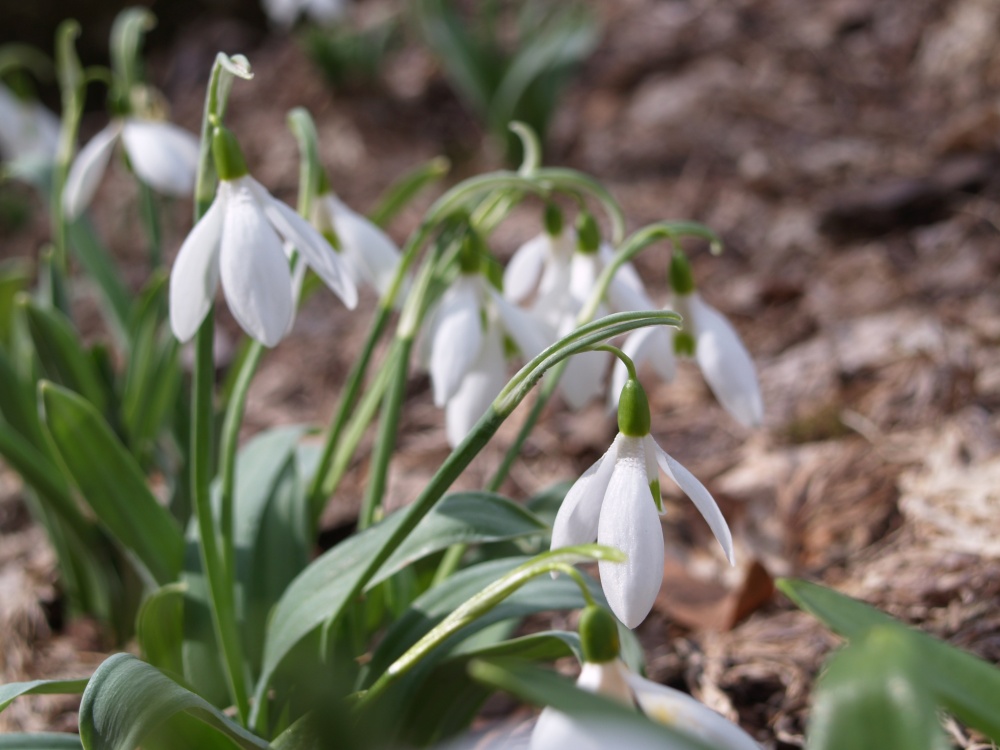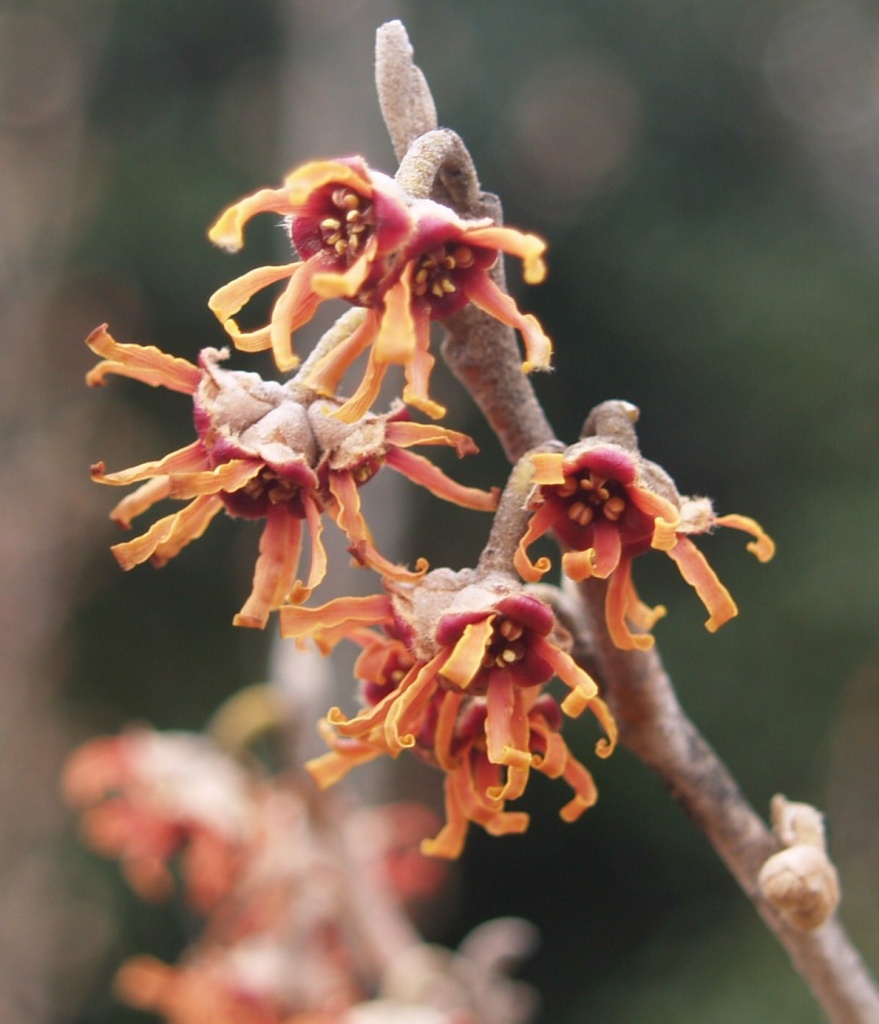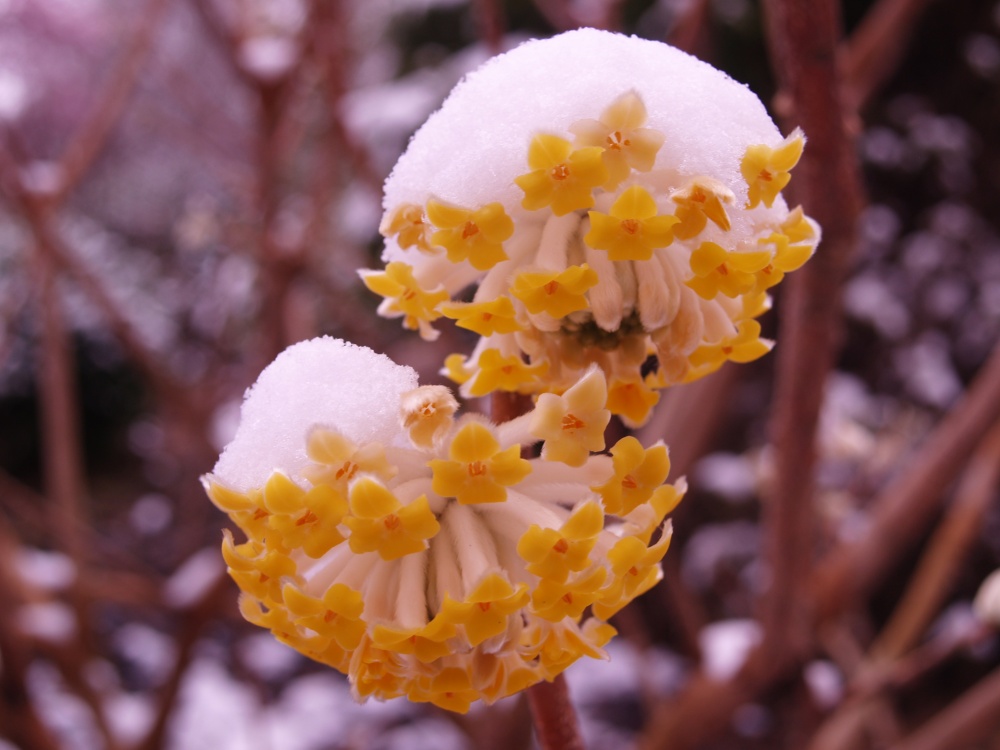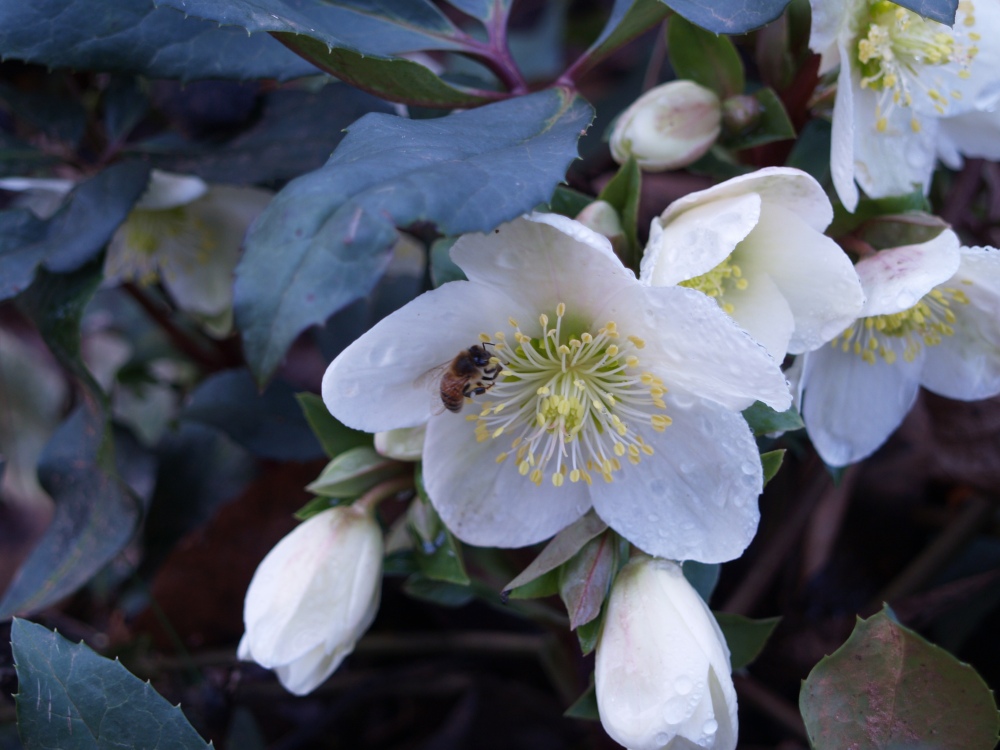The gardener rejoices with the first snowdrop (Galanthus spp., below) in January, and when foliage of daffodils first breaks through the soil. This is the hope for spring’s arrival, that winter’s end could be near.
Though expected, flowers of the Vernal witch hazel (Hamamelis vernalis, below) and Winter jasmine (Jasminum nudiflora) are viewed joyfully, the gardener desperate for more color than the browns and grays of winter. The hybrid crosses of Japanese and Chinese witch hazels (Hamamelis x intermedia) typically flower in mid February, but buds are closely monitored for any glimpse of color two weeks earlier.
In typical winter temperatures the paperbushes (Edgeworthia chrysantha, below) might show a bit of color alongside ‘Arnold Promise’ and ‘Jelena’, but in a colder winter there will be no blooms before early March. In recent years there were no flowers at all. All were frozen, with branch tips killed by a foot or more, reducing large, vigorous shrubs by half.
This progression, from a few scattered flowers to spring’s bouquet, is tortuous to the gardener who is anxious to be started planting. Though the hours of daylight become noticeably longer, the winter crawls along.
But, not in this January, when hellebores (Helleborus x hybridus, above) and witch hazels flowered in December, and foliage of daffodils and alliums stands a foot tall. The winter jasmine (Jasminum nudiflorum) is in full bloom, and a spell of several mild days could bring the daphnes (Daphne odora ‘Aureomarginata’, below) into bloom. Already, there are pink tips poking from the buds.
Fortunately, the early flowering magnolias, ‘Royal Star’ and ‘Dr. Merill’, show no signs of swelling buds. Their flowers are readily damaged in any March freeze, no matter how slight, and it is a certainty that there will be many nights below freezing in this winter, even if daytime temperatures remain mild.
Dave….Here in N. Va, we’re seeing the temps dip below freezing from time to time, hitting the teens about twice in past two weeks. Helebores looking good. What’s the best time for us to transplant a barberry (approx 3′ tall) to another location? Same question for some wild holly trees (Americana?) less than one foot tall.
I am also in northern Virginia, but probably a bit further west since we’ve dropped overnight to nine and ten degrees. Still, this is isn’t cold enough to trouble any plants. I prefer to transplant most plants in late winter or early spring, though most can be moved at just about anytime if you’re careful with watering. If you can move plants when they’re dormant you’re much safer and often will not have to bother with watering since the soil stays damp longer with cool temperatures.
Oh my I would love to grow witch hazel, but apparently that is not a plant we can grow in the Dakotas.
In northern Virginia we’re shivering through a high this afternoon of thirty five, with a high in the mid twenties tomorrow. I know, this is spring in the Dakotas.
Chilly -24 windchill this morning a few churches called off. Not that it is impossible, but most of the young people stay home and it is really too dangerous for the elderly to be outside. Stay warm to you!